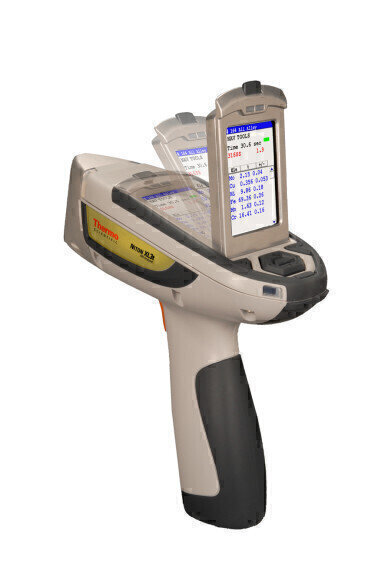Environmental Laboratory
New Handheld XRF Analyzer with Large Area Drift Detector
Jul 05 2009
Thermo Fisher Scientific (USA) introduce Thermo Scientific Niton XL3t Series with geometrically optimized large area drift detector (GOLDD™) technology. The Niton analyzer’s groundbreaking GOLDD technology delivers improvements in light element detection, overall sensitivity and measurement times – as much as 10 times faster than conventional Si-PIN detectors, and up to three times more precise than conventional smaller, silicon drift detectors.
Thermo Fisher Scientific was able to surpass the performance of conventional Si-PIN and SDD detectors by combining the award-winning Niton XL3t’s 50kV, 2-watt X-ray tube, closely optimized geometry and patented signal processing hardware and software. When combined with the company’s proprietary large area drift detector, it creates GOLDD technology, delivering superior performance in the form of faster analysis and lower detection limits. Furthermore, this innovation allows light element detection of magnesium, aluminum, silicon, phosphorus and sulfur without helium or vacuum purging, a significant productivity and user benefit.
“The Niton XL3t with GOLDD technology brings true lab-quality performance to a handheld XRF analyzer,” said Bob Wopperer, director of business development for portable analyzer products within Thermo Fisher Scientific. “The product is easy to use, delivers fast analysis, is extremely accurate, and can measure light elements without helium or vacuum assistance. These features make it the ideal, multi-purpose tool for analyzing metal alloys, carrying out mining exploration and mapping, detecting soil contaminants, or screening toys, electronics and other consumer goods for prohibited substances.”
For example, the Niton XL3t GOLDD is the definitive tool for scrap metal recycling, making it easier to sort aluminum, titanium and bronze alloys, as well as achieving superior performance for tramp and trace element analysis. And in mining exploration, the instrument’s low detection limits are designed to allow geologists to identify anomalies at or below the averages naturally found in the earth’s crust, something previously not possible with handheld XRF.
Digital Edition
PIN 25.3 June/July
June 2024
Analytical Instrumentation - Recent Advances In Various Bench Scale Accelerated Oxidative Testing Methods For Fuels - Petrochemical Industry: Anton Paar Solutions Streamline Processes, Reduce H...
View all digital editions
Events
Jul 30 2024 Jakarta, Indonesia
Jul 30 2024 Jakarta, Indonesia
China Energy Summit & Exhibition
Jul 31 2024 Beijing, China
Jul 31 2024 Chengdu, China
Aug 05 2024 Moon Township, PA, USA


















